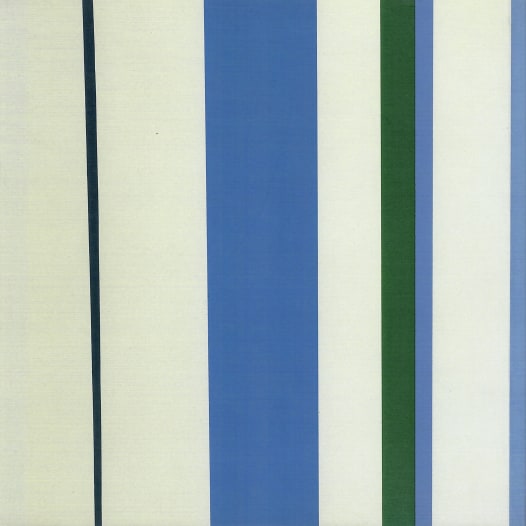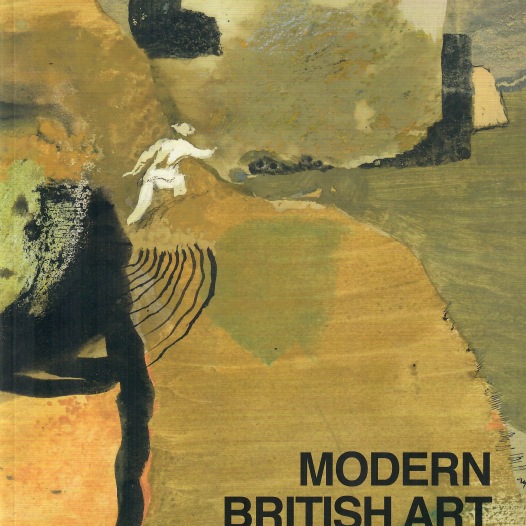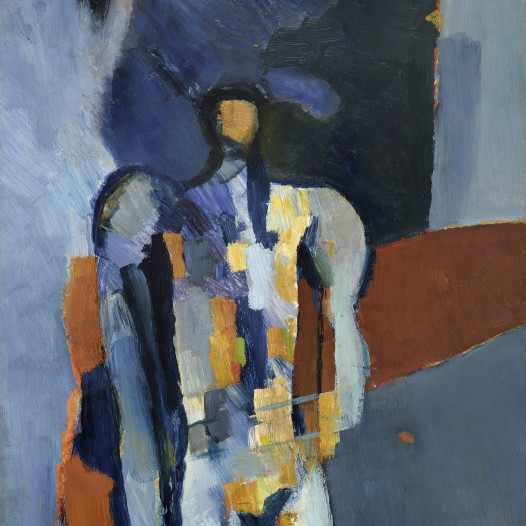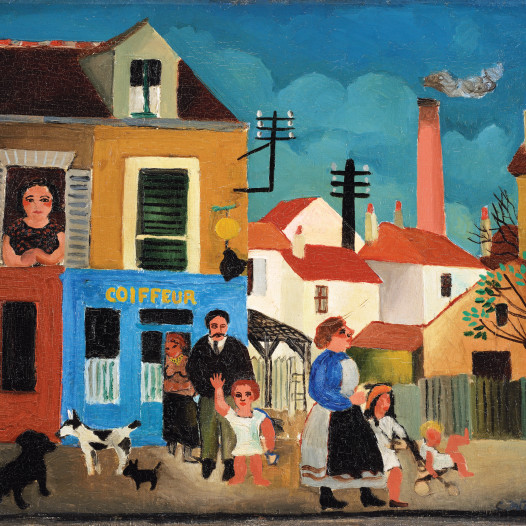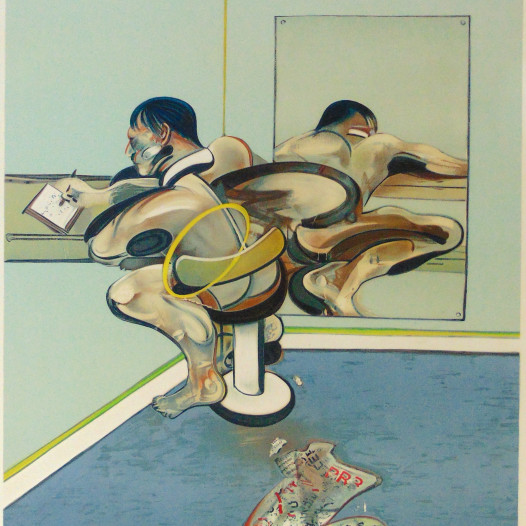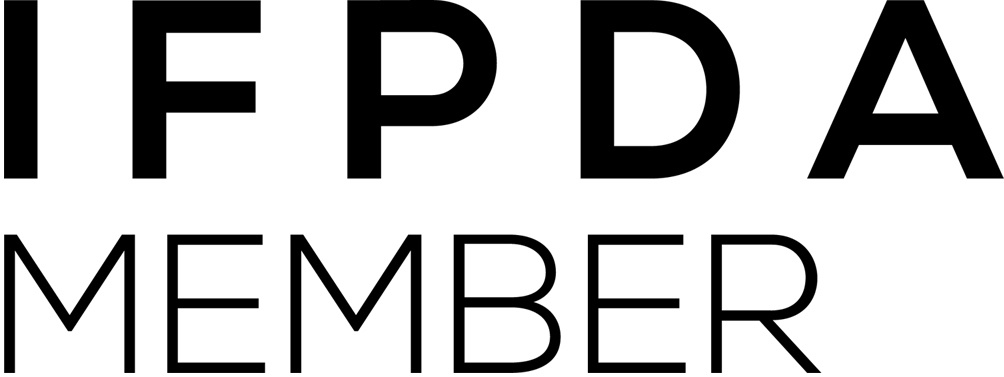Leon Underwood
1890–1975Works
-
 Leon UnderwoodRise-Decline, 1963Bronze on rosewood plinth23 x 33 x 13 cmFrom the edition of 7Signed, dated and numbered%3Cdiv%20class%3D%22artist%22%3E%3Cspan%20class%3D%22artist%22%3E%3Cstrong%3ELeon%20Underwood%3C/strong%3E%3C/span%3E%3C/div%3E%0D%3Cdiv%20class%3D%22title%22%3E%3Cem%3ERise-Decline%3C/em%3E%2C%201963%3C/div%3E%0D%3Cdiv%20class%3D%22signed_and_dated%22%3ESigned%2C%20dated%20and%20numbered%20%3C/div%3E%0D%3Cdiv%20class%3D%22medium%22%3EBronze%20on%20rosewood%20plinth%3C/div%3E%0D%3Cdiv%20class%3D%22dimensions%22%3E23%20x%2033%20x%2013%20cm%3C/div%3E%0D%3Cdiv%20class%3D%22edition_details%22%3EFrom%20the%20edition%20of%207%3C/div%3E
Leon UnderwoodRise-Decline, 1963Bronze on rosewood plinth23 x 33 x 13 cmFrom the edition of 7Signed, dated and numbered%3Cdiv%20class%3D%22artist%22%3E%3Cspan%20class%3D%22artist%22%3E%3Cstrong%3ELeon%20Underwood%3C/strong%3E%3C/span%3E%3C/div%3E%0D%3Cdiv%20class%3D%22title%22%3E%3Cem%3ERise-Decline%3C/em%3E%2C%201963%3C/div%3E%0D%3Cdiv%20class%3D%22signed_and_dated%22%3ESigned%2C%20dated%20and%20numbered%20%3C/div%3E%0D%3Cdiv%20class%3D%22medium%22%3EBronze%20on%20rosewood%20plinth%3C/div%3E%0D%3Cdiv%20class%3D%22dimensions%22%3E23%20x%2033%20x%2013%20cm%3C/div%3E%0D%3Cdiv%20class%3D%22edition_details%22%3EFrom%20the%20edition%20of%207%3C/div%3E -
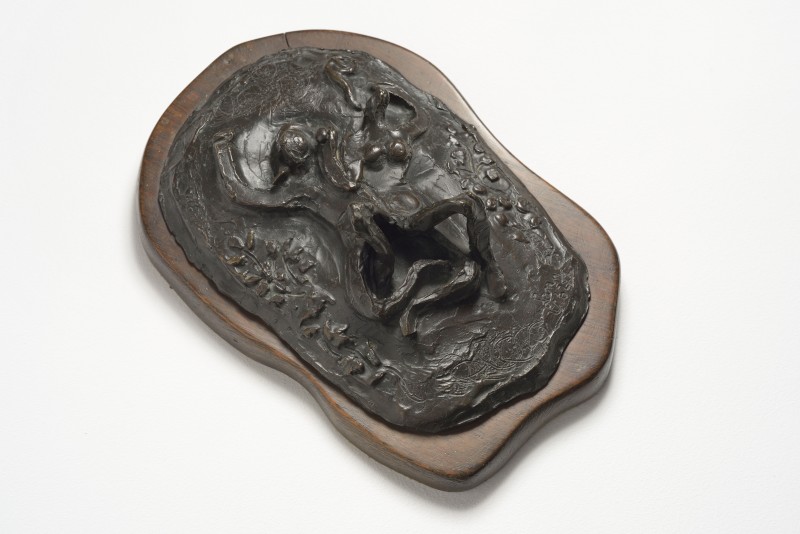 Leon UnderwoodEden, 1962Bronze on rosewood plinth8 x 25 x 18 cmFrom the edition of 20Signed and numbered%3Cdiv%20class%3D%22artist%22%3E%3Cspan%20class%3D%22artist%22%3E%3Cstrong%3ELeon%20Underwood%3C/strong%3E%3C/span%3E%3C/div%3E%0D%3Cdiv%20class%3D%22title%22%3E%3Cem%3EEden%3C/em%3E%2C%201962%3C/div%3E%0D%3Cdiv%20class%3D%22signed_and_dated%22%3ESigned%20and%20numbered%20%3C/div%3E%0D%3Cdiv%20class%3D%22medium%22%3EBronze%20on%20rosewood%20plinth%3C/div%3E%0D%3Cdiv%20class%3D%22dimensions%22%3E8%20x%2025%20x%2018%20cm%3C/div%3E%0D%3Cdiv%20class%3D%22edition_details%22%3EFrom%20the%20edition%20of%2020%3C/div%3E
Leon UnderwoodEden, 1962Bronze on rosewood plinth8 x 25 x 18 cmFrom the edition of 20Signed and numbered%3Cdiv%20class%3D%22artist%22%3E%3Cspan%20class%3D%22artist%22%3E%3Cstrong%3ELeon%20Underwood%3C/strong%3E%3C/span%3E%3C/div%3E%0D%3Cdiv%20class%3D%22title%22%3E%3Cem%3EEden%3C/em%3E%2C%201962%3C/div%3E%0D%3Cdiv%20class%3D%22signed_and_dated%22%3ESigned%20and%20numbered%20%3C/div%3E%0D%3Cdiv%20class%3D%22medium%22%3EBronze%20on%20rosewood%20plinth%3C/div%3E%0D%3Cdiv%20class%3D%22dimensions%22%3E8%20x%2025%20x%2018%20cm%3C/div%3E%0D%3Cdiv%20class%3D%22edition_details%22%3EFrom%20the%20edition%20of%2020%3C/div%3E -
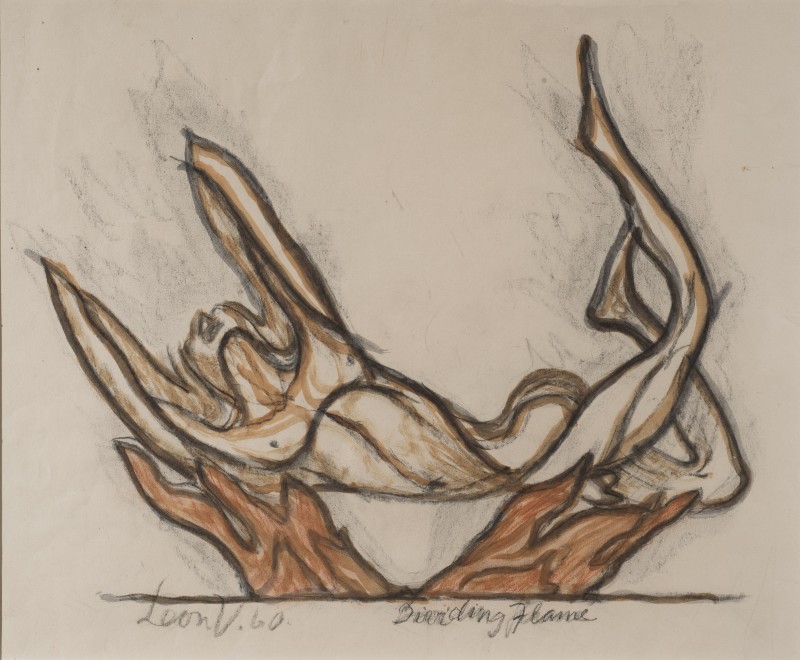 Leon UnderwoodDividing Flame, 1960Ink and charcoal on paper33 x 40 cmSigned, dated and titled below image%3Cdiv%20class%3D%22artist%22%3E%3Cspan%20class%3D%22artist%22%3E%3Cstrong%3ELeon%20Underwood%3C/strong%3E%3C/span%3E%3C/div%3E%0D%3Cdiv%20class%3D%22title%22%3E%3Cem%3EDividing%20Flame%3C/em%3E%2C%201960%3C/div%3E%0D%3Cdiv%20class%3D%22signed_and_dated%22%3ESigned%2C%20dated%20and%20titled%20below%20image%3C/div%3E%0D%3Cdiv%20class%3D%22medium%22%3EInk%20and%20charcoal%20on%20paper%3C/div%3E%0D%3Cdiv%20class%3D%22dimensions%22%3E33%20x%2040%20cm%3C/div%3E
Leon UnderwoodDividing Flame, 1960Ink and charcoal on paper33 x 40 cmSigned, dated and titled below image%3Cdiv%20class%3D%22artist%22%3E%3Cspan%20class%3D%22artist%22%3E%3Cstrong%3ELeon%20Underwood%3C/strong%3E%3C/span%3E%3C/div%3E%0D%3Cdiv%20class%3D%22title%22%3E%3Cem%3EDividing%20Flame%3C/em%3E%2C%201960%3C/div%3E%0D%3Cdiv%20class%3D%22signed_and_dated%22%3ESigned%2C%20dated%20and%20titled%20below%20image%3C/div%3E%0D%3Cdiv%20class%3D%22medium%22%3EInk%20and%20charcoal%20on%20paper%3C/div%3E%0D%3Cdiv%20class%3D%22dimensions%22%3E33%20x%2040%20cm%3C/div%3E -
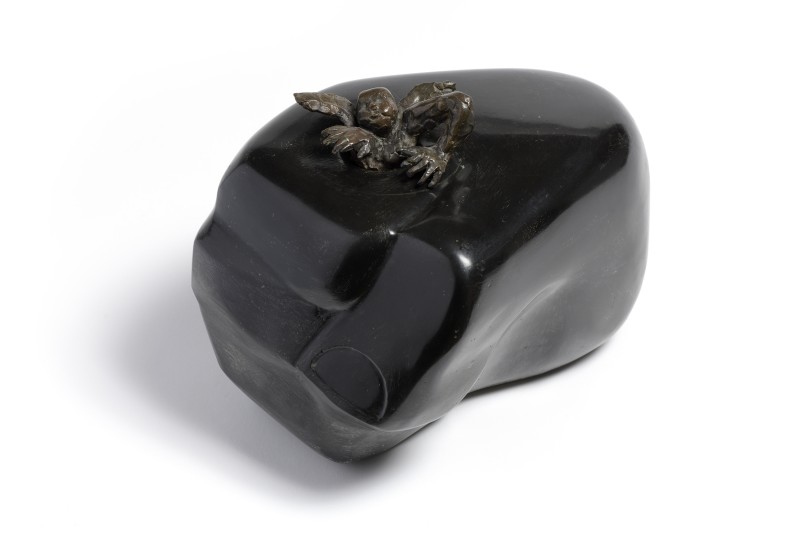 Leon UnderwoodThe Bronze Age emerging from the Stone Age, 1960Bronze and black stone17 x 23 x 17 cmUnique%3Cdiv%20class%3D%22artist%22%3E%3Cspan%20class%3D%22artist%22%3E%3Cstrong%3ELeon%20Underwood%3C/strong%3E%3C/span%3E%3C/div%3E%0D%3Cdiv%20class%3D%22title%22%3E%3Cem%3EThe%20Bronze%20Age%20emerging%20from%20the%20Stone%20Age%3C/em%3E%2C%201960%3C/div%3E%0D%3Cdiv%20class%3D%22medium%22%3EBronze%20and%20black%20stone%3C/div%3E%0D%3Cdiv%20class%3D%22dimensions%22%3E17%20x%2023%20x%2017%20cm%3C/div%3E%0D%3Cdiv%20class%3D%22edition_details%22%3EUnique%3C/div%3E
Leon UnderwoodThe Bronze Age emerging from the Stone Age, 1960Bronze and black stone17 x 23 x 17 cmUnique%3Cdiv%20class%3D%22artist%22%3E%3Cspan%20class%3D%22artist%22%3E%3Cstrong%3ELeon%20Underwood%3C/strong%3E%3C/span%3E%3C/div%3E%0D%3Cdiv%20class%3D%22title%22%3E%3Cem%3EThe%20Bronze%20Age%20emerging%20from%20the%20Stone%20Age%3C/em%3E%2C%201960%3C/div%3E%0D%3Cdiv%20class%3D%22medium%22%3EBronze%20and%20black%20stone%3C/div%3E%0D%3Cdiv%20class%3D%22dimensions%22%3E17%20x%2023%20x%2017%20cm%3C/div%3E%0D%3Cdiv%20class%3D%22edition_details%22%3EUnique%3C/div%3E -
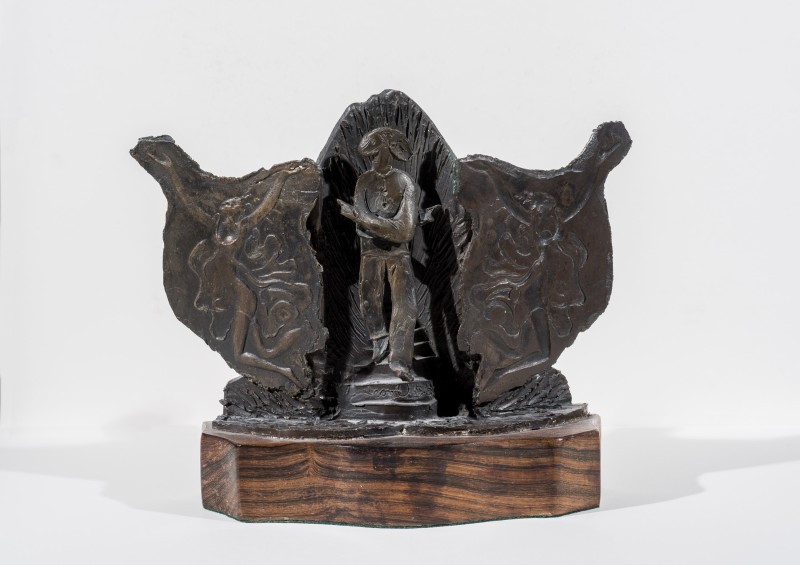 Leon UnderwoodThe Ways, 1956Bronze22 x 28 x 6 cmFrom the edition of 7Signed, dated and numbered%3Cdiv%20class%3D%22artist%22%3E%3Cspan%20class%3D%22artist%22%3E%3Cstrong%3ELeon%20Underwood%3C/strong%3E%3C/span%3E%3C/div%3E%0D%3Cdiv%20class%3D%22title%22%3E%3Cem%3EThe%20Ways%3C/em%3E%2C%201956%3C/div%3E%0D%3Cdiv%20class%3D%22signed_and_dated%22%3ESigned%2C%20dated%20and%20numbered%3C/div%3E%0D%3Cdiv%20class%3D%22medium%22%3EBronze%3C/div%3E%0D%3Cdiv%20class%3D%22dimensions%22%3E22%20x%2028%20x%206%20cm%3C/div%3E%0D%3Cdiv%20class%3D%22edition_details%22%3EFrom%20the%20edition%20of%207%3C/div%3E
Leon UnderwoodThe Ways, 1956Bronze22 x 28 x 6 cmFrom the edition of 7Signed, dated and numbered%3Cdiv%20class%3D%22artist%22%3E%3Cspan%20class%3D%22artist%22%3E%3Cstrong%3ELeon%20Underwood%3C/strong%3E%3C/span%3E%3C/div%3E%0D%3Cdiv%20class%3D%22title%22%3E%3Cem%3EThe%20Ways%3C/em%3E%2C%201956%3C/div%3E%0D%3Cdiv%20class%3D%22signed_and_dated%22%3ESigned%2C%20dated%20and%20numbered%3C/div%3E%0D%3Cdiv%20class%3D%22medium%22%3EBronze%3C/div%3E%0D%3Cdiv%20class%3D%22dimensions%22%3E22%20x%2028%20x%206%20cm%3C/div%3E%0D%3Cdiv%20class%3D%22edition_details%22%3EFrom%20the%20edition%20of%207%3C/div%3E -
 Leon UnderwoodLight Industries and Secretariat, 1953Bronze mounted on rosewood38 x 17 x 3 cmEdition of 3 plus 2 artist's castsSigned and dated%3Cdiv%20class%3D%22artist%22%3E%3Cspan%20class%3D%22artist%22%3E%3Cstrong%3ELeon%20Underwood%3C/strong%3E%3C/span%3E%3C/div%3E%0D%3Cdiv%20class%3D%22title%22%3E%3Cem%3ELight%20Industries%20and%20Secretariat%3C/em%3E%2C%201953%3C/div%3E%0D%3Cdiv%20class%3D%22signed_and_dated%22%3ESigned%20and%20dated%3C/div%3E%0D%3Cdiv%20class%3D%22medium%22%3EBronze%20mounted%20on%20rosewood%3C/div%3E%0D%3Cdiv%20class%3D%22dimensions%22%3E38%20x%2017%20x%203%20cm%3C/div%3E%0D%3Cdiv%20class%3D%22edition_details%22%3EEdition%20of%203%20plus%202%20artist%27s%20casts%3C/div%3E
Leon UnderwoodLight Industries and Secretariat, 1953Bronze mounted on rosewood38 x 17 x 3 cmEdition of 3 plus 2 artist's castsSigned and dated%3Cdiv%20class%3D%22artist%22%3E%3Cspan%20class%3D%22artist%22%3E%3Cstrong%3ELeon%20Underwood%3C/strong%3E%3C/span%3E%3C/div%3E%0D%3Cdiv%20class%3D%22title%22%3E%3Cem%3ELight%20Industries%20and%20Secretariat%3C/em%3E%2C%201953%3C/div%3E%0D%3Cdiv%20class%3D%22signed_and_dated%22%3ESigned%20and%20dated%3C/div%3E%0D%3Cdiv%20class%3D%22medium%22%3EBronze%20mounted%20on%20rosewood%3C/div%3E%0D%3Cdiv%20class%3D%22dimensions%22%3E38%20x%2017%20x%203%20cm%3C/div%3E%0D%3Cdiv%20class%3D%22edition_details%22%3EEdition%20of%203%20plus%202%20artist%27s%20casts%3C/div%3E -
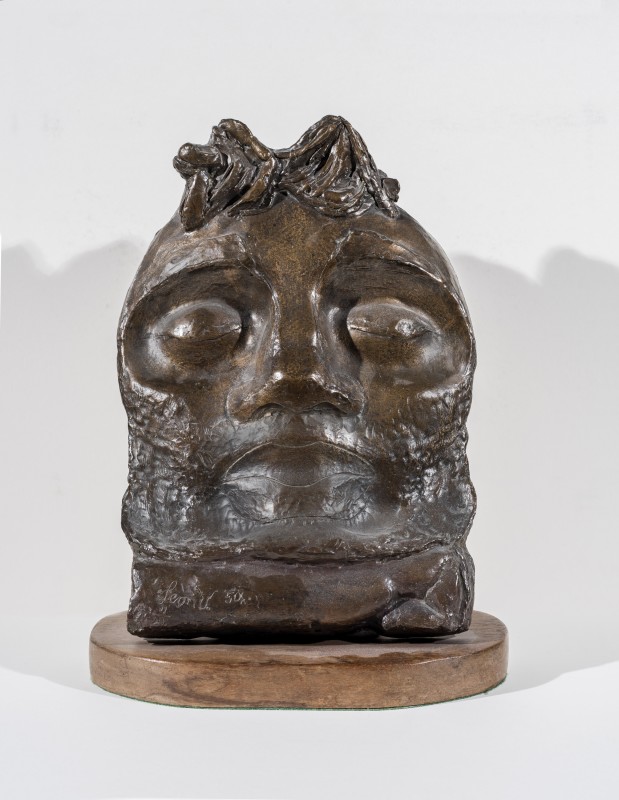 Leon UnderwoodCreation: The Seventh Day, 1950Bronze34 x 22 x 11 cmFrom the edition of 7Signed, dated and numbered%3Cdiv%20class%3D%22artist%22%3E%3Cspan%20class%3D%22artist%22%3E%3Cstrong%3ELeon%20Underwood%3C/strong%3E%3C/span%3E%3C/div%3E%0D%3Cdiv%20class%3D%22title%22%3E%3Cem%3ECreation%3A%20The%20Seventh%20Day%3C/em%3E%2C%201950%3C/div%3E%0D%3Cdiv%20class%3D%22signed_and_dated%22%3ESigned%2C%20dated%20and%20numbered%3C/div%3E%0D%3Cdiv%20class%3D%22medium%22%3EBronze%3C/div%3E%0D%3Cdiv%20class%3D%22dimensions%22%3E34%20x%2022%20x%2011%20cm%3C/div%3E%0D%3Cdiv%20class%3D%22edition_details%22%3EFrom%20the%20edition%20of%207%3C/div%3E
Leon UnderwoodCreation: The Seventh Day, 1950Bronze34 x 22 x 11 cmFrom the edition of 7Signed, dated and numbered%3Cdiv%20class%3D%22artist%22%3E%3Cspan%20class%3D%22artist%22%3E%3Cstrong%3ELeon%20Underwood%3C/strong%3E%3C/span%3E%3C/div%3E%0D%3Cdiv%20class%3D%22title%22%3E%3Cem%3ECreation%3A%20The%20Seventh%20Day%3C/em%3E%2C%201950%3C/div%3E%0D%3Cdiv%20class%3D%22signed_and_dated%22%3ESigned%2C%20dated%20and%20numbered%3C/div%3E%0D%3Cdiv%20class%3D%22medium%22%3EBronze%3C/div%3E%0D%3Cdiv%20class%3D%22dimensions%22%3E34%20x%2022%20x%2011%20cm%3C/div%3E%0D%3Cdiv%20class%3D%22edition_details%22%3EFrom%20the%20edition%20of%207%3C/div%3E -
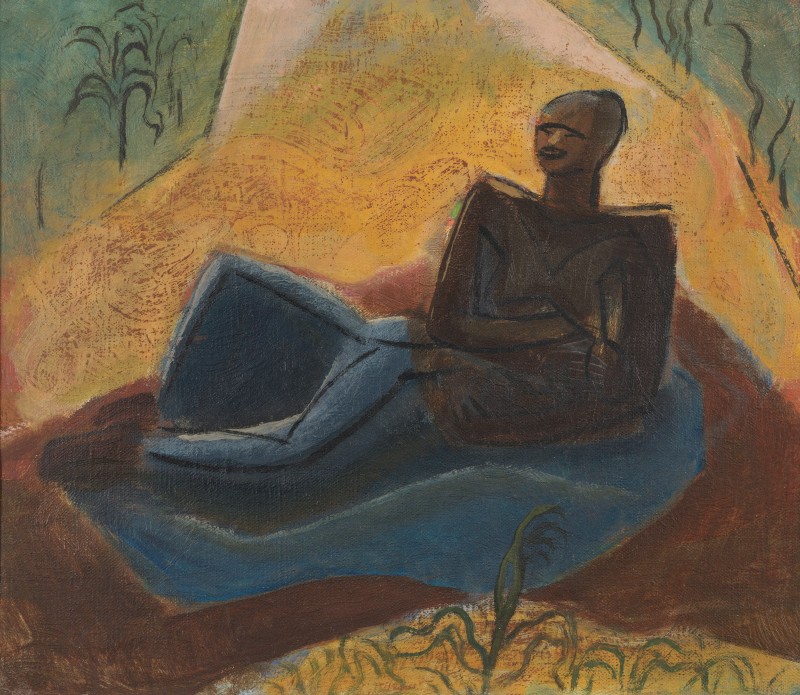 Leon UnderwoodYoruba Mother, 1949Oil on board31 x 35.5 cm%3Cdiv%20class%3D%22artist%22%3E%3Cspan%20class%3D%22artist%22%3E%3Cstrong%3ELeon%20Underwood%3C/strong%3E%3C/span%3E%3C/div%3E%0D%3Cdiv%20class%3D%22title%22%3E%3Cem%3EYoruba%20Mother%3C/em%3E%2C%201949%3C/div%3E%0D%3Cdiv%20class%3D%22medium%22%3EOil%20on%20board%3C/div%3E%0D%3Cdiv%20class%3D%22dimensions%22%3E31%20x%2035.5%20cm%3C/div%3E
Leon UnderwoodYoruba Mother, 1949Oil on board31 x 35.5 cm%3Cdiv%20class%3D%22artist%22%3E%3Cspan%20class%3D%22artist%22%3E%3Cstrong%3ELeon%20Underwood%3C/strong%3E%3C/span%3E%3C/div%3E%0D%3Cdiv%20class%3D%22title%22%3E%3Cem%3EYoruba%20Mother%3C/em%3E%2C%201949%3C/div%3E%0D%3Cdiv%20class%3D%22medium%22%3EOil%20on%20board%3C/div%3E%0D%3Cdiv%20class%3D%22dimensions%22%3E31%20x%2035.5%20cm%3C/div%3E -
 Leon UnderwoodThe Cast-Net, 1946Oil on canvas60 x 50 cm%3Cdiv%20class%3D%22artist%22%3E%3Cspan%20class%3D%22artist%22%3E%3Cstrong%3ELeon%20Underwood%3C/strong%3E%3C/span%3E%3C/div%3E%0D%3Cdiv%20class%3D%22title%22%3E%3Cem%3EThe%20Cast-Net%3C/em%3E%2C%201946%3C/div%3E%0D%3Cdiv%20class%3D%22medium%22%3EOil%20on%20canvas%3C/div%3E%0D%3Cdiv%20class%3D%22dimensions%22%3E60%20x%2050%20cm%3C/div%3E
Leon UnderwoodThe Cast-Net, 1946Oil on canvas60 x 50 cm%3Cdiv%20class%3D%22artist%22%3E%3Cspan%20class%3D%22artist%22%3E%3Cstrong%3ELeon%20Underwood%3C/strong%3E%3C/span%3E%3C/div%3E%0D%3Cdiv%20class%3D%22title%22%3E%3Cem%3EThe%20Cast-Net%3C/em%3E%2C%201946%3C/div%3E%0D%3Cdiv%20class%3D%22medium%22%3EOil%20on%20canvas%3C/div%3E%0D%3Cdiv%20class%3D%22dimensions%22%3E60%20x%2050%20cm%3C/div%3E -
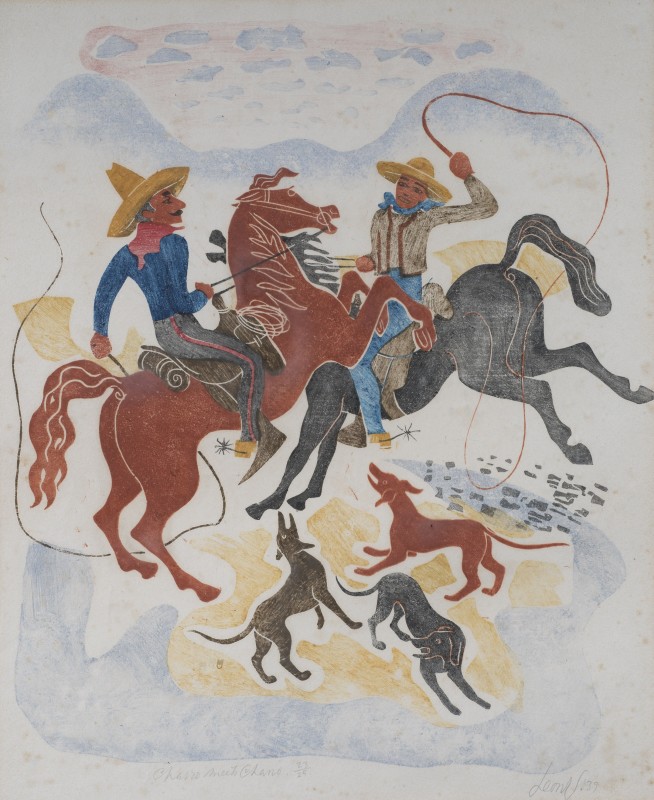 Leon UnderwoodCharo Meets Charo, 1939Linocut44 x 38 cmFrom the edition of 25 impressionsSigned, titled and numbered%3Cdiv%20class%3D%22artist%22%3E%3Cspan%20class%3D%22artist%22%3E%3Cstrong%3ELeon%20Underwood%3C/strong%3E%3C/span%3E%3C/div%3E%0D%3Cdiv%20class%3D%22title%22%3E%3Cem%3ECharo%20Meets%20Charo%3C/em%3E%2C%201939%3C/div%3E%0D%3Cdiv%20class%3D%22signed_and_dated%22%3ESigned%2C%20titled%20and%20numbered%3C/div%3E%0D%3Cdiv%20class%3D%22medium%22%3ELinocut%3C/div%3E%0D%3Cdiv%20class%3D%22dimensions%22%3E44%20x%2038%20cm%3C/div%3E%0D%3Cdiv%20class%3D%22edition_details%22%3EFrom%20the%20edition%20of%2025%20impressions%3C/div%3E
Leon UnderwoodCharo Meets Charo, 1939Linocut44 x 38 cmFrom the edition of 25 impressionsSigned, titled and numbered%3Cdiv%20class%3D%22artist%22%3E%3Cspan%20class%3D%22artist%22%3E%3Cstrong%3ELeon%20Underwood%3C/strong%3E%3C/span%3E%3C/div%3E%0D%3Cdiv%20class%3D%22title%22%3E%3Cem%3ECharo%20Meets%20Charo%3C/em%3E%2C%201939%3C/div%3E%0D%3Cdiv%20class%3D%22signed_and_dated%22%3ESigned%2C%20titled%20and%20numbered%3C/div%3E%0D%3Cdiv%20class%3D%22medium%22%3ELinocut%3C/div%3E%0D%3Cdiv%20class%3D%22dimensions%22%3E44%20x%2038%20cm%3C/div%3E%0D%3Cdiv%20class%3D%22edition_details%22%3EFrom%20the%20edition%20of%2025%20impressions%3C/div%3E -
 Leon UnderwoodLa Paloma, 1939Linocut43 x 55 cmFrom the edition of 25 impressionsSigned, titled and numbered%3Cdiv%20class%3D%22artist%22%3E%3Cspan%20class%3D%22artist%22%3E%3Cstrong%3ELeon%20Underwood%3C/strong%3E%3C/span%3E%3C/div%3E%0D%3Cdiv%20class%3D%22title%22%3E%3Cem%3ELa%20Paloma%3C/em%3E%2C%201939%3C/div%3E%0D%3Cdiv%20class%3D%22signed_and_dated%22%3ESigned%2C%20titled%20and%20numbered%3C/div%3E%0D%3Cdiv%20class%3D%22medium%22%3ELinocut%3C/div%3E%0D%3Cdiv%20class%3D%22dimensions%22%3E43%20x%2055%20cm%3C/div%3E%0D%3Cdiv%20class%3D%22edition_details%22%3EFrom%20the%20edition%20of%2025%20impressions%3C/div%3E
Leon UnderwoodLa Paloma, 1939Linocut43 x 55 cmFrom the edition of 25 impressionsSigned, titled and numbered%3Cdiv%20class%3D%22artist%22%3E%3Cspan%20class%3D%22artist%22%3E%3Cstrong%3ELeon%20Underwood%3C/strong%3E%3C/span%3E%3C/div%3E%0D%3Cdiv%20class%3D%22title%22%3E%3Cem%3ELa%20Paloma%3C/em%3E%2C%201939%3C/div%3E%0D%3Cdiv%20class%3D%22signed_and_dated%22%3ESigned%2C%20titled%20and%20numbered%3C/div%3E%0D%3Cdiv%20class%3D%22medium%22%3ELinocut%3C/div%3E%0D%3Cdiv%20class%3D%22dimensions%22%3E43%20x%2055%20cm%3C/div%3E%0D%3Cdiv%20class%3D%22edition_details%22%3EFrom%20the%20edition%20of%2025%20impressions%3C/div%3E -
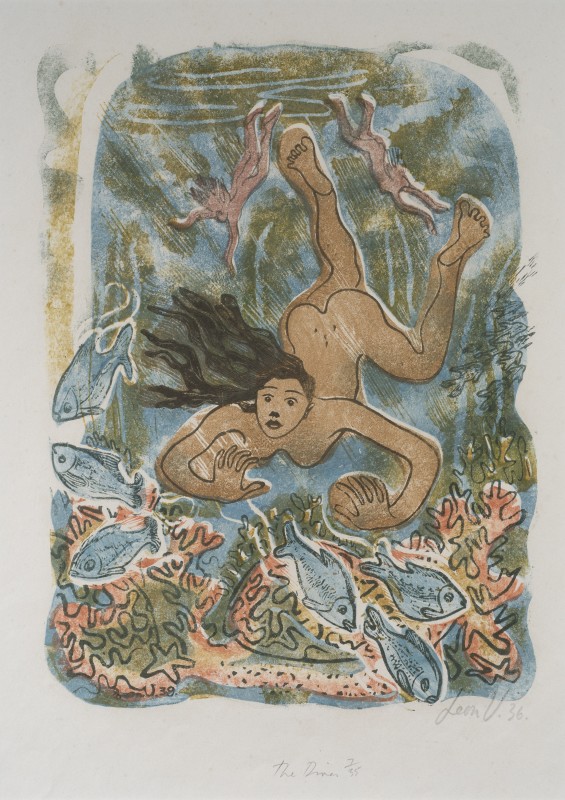 Leon UnderwoodThe Diver, 1939Linocut57 x 39 cmFrom the edition of 35 impressionsSigned, dated, titled and numbered%3Cdiv%20class%3D%22artist%22%3E%3Cspan%20class%3D%22artist%22%3E%3Cstrong%3ELeon%20Underwood%3C/strong%3E%3C/span%3E%3C/div%3E%0D%3Cdiv%20class%3D%22title%22%3E%3Cem%3EThe%20Diver%3C/em%3E%2C%201939%3C/div%3E%0D%3Cdiv%20class%3D%22signed_and_dated%22%3ESigned%2C%20dated%2C%20titled%20and%20numbered%3C/div%3E%0D%3Cdiv%20class%3D%22medium%22%3ELinocut%3C/div%3E%0D%3Cdiv%20class%3D%22dimensions%22%3E57%20x%2039%20cm%3C/div%3E%0D%3Cdiv%20class%3D%22edition_details%22%3EFrom%20the%20edition%20of%2035%20impressions%3C/div%3E
Leon UnderwoodThe Diver, 1939Linocut57 x 39 cmFrom the edition of 35 impressionsSigned, dated, titled and numbered%3Cdiv%20class%3D%22artist%22%3E%3Cspan%20class%3D%22artist%22%3E%3Cstrong%3ELeon%20Underwood%3C/strong%3E%3C/span%3E%3C/div%3E%0D%3Cdiv%20class%3D%22title%22%3E%3Cem%3EThe%20Diver%3C/em%3E%2C%201939%3C/div%3E%0D%3Cdiv%20class%3D%22signed_and_dated%22%3ESigned%2C%20dated%2C%20titled%20and%20numbered%3C/div%3E%0D%3Cdiv%20class%3D%22medium%22%3ELinocut%3C/div%3E%0D%3Cdiv%20class%3D%22dimensions%22%3E57%20x%2039%20cm%3C/div%3E%0D%3Cdiv%20class%3D%22edition_details%22%3EFrom%20the%20edition%20of%2035%20impressions%3C/div%3E -
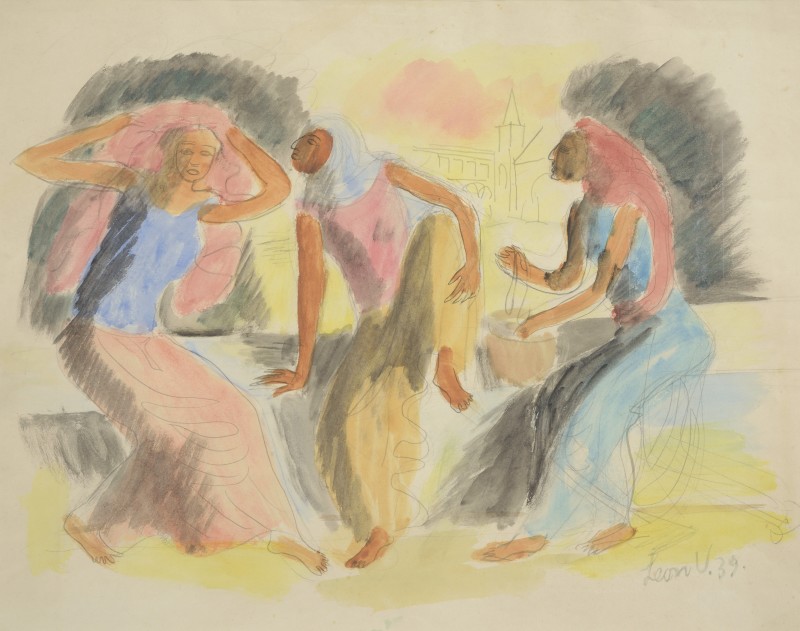 Leon UnderwoodThree Mexican Women, 1939Watercolour and pencil on paper39 x 56 cmSigned and dated lower right%3Cdiv%20class%3D%22artist%22%3E%3Cspan%20class%3D%22artist%22%3E%3Cstrong%3ELeon%20Underwood%3C/strong%3E%3C/span%3E%3C/div%3E%0D%3Cdiv%20class%3D%22title%22%3E%3Cem%3EThree%20Mexican%20Women%3C/em%3E%2C%201939%3C/div%3E%0D%3Cdiv%20class%3D%22signed_and_dated%22%3ESigned%20and%20dated%20lower%20right%3C/div%3E%0D%3Cdiv%20class%3D%22medium%22%3EWatercolour%20and%20pencil%20on%20paper%3C/div%3E%0D%3Cdiv%20class%3D%22dimensions%22%3E39%20x%2056%20cm%3C/div%3E
Leon UnderwoodThree Mexican Women, 1939Watercolour and pencil on paper39 x 56 cmSigned and dated lower right%3Cdiv%20class%3D%22artist%22%3E%3Cspan%20class%3D%22artist%22%3E%3Cstrong%3ELeon%20Underwood%3C/strong%3E%3C/span%3E%3C/div%3E%0D%3Cdiv%20class%3D%22title%22%3E%3Cem%3EThree%20Mexican%20Women%3C/em%3E%2C%201939%3C/div%3E%0D%3Cdiv%20class%3D%22signed_and_dated%22%3ESigned%20and%20dated%20lower%20right%3C/div%3E%0D%3Cdiv%20class%3D%22medium%22%3EWatercolour%20and%20pencil%20on%20paper%3C/div%3E%0D%3Cdiv%20class%3D%22dimensions%22%3E39%20x%2056%20cm%3C/div%3E -
 Leon UnderwoodJekyll and Hyde, 1937Bronze14 x 13 x 6 cmFrom the edition of 7Signed, titled and numbered%3Cdiv%20class%3D%22artist%22%3E%3Cspan%20class%3D%22artist%22%3E%3Cstrong%3ELeon%20Underwood%3C/strong%3E%3C/span%3E%3C/div%3E%0D%3Cdiv%20class%3D%22title%22%3E%3Cem%3EJekyll%20and%20Hyde%3C/em%3E%2C%201937%3C/div%3E%0D%3Cdiv%20class%3D%22signed_and_dated%22%3ESigned%2C%20titled%20and%20numbered%3C/div%3E%0D%3Cdiv%20class%3D%22medium%22%3EBronze%3C/div%3E%0D%3Cdiv%20class%3D%22dimensions%22%3E14%20x%2013%20x%206%20cm%3C/div%3E%0D%3Cdiv%20class%3D%22edition_details%22%3EFrom%20the%20edition%20of%207%3C/div%3E
Leon UnderwoodJekyll and Hyde, 1937Bronze14 x 13 x 6 cmFrom the edition of 7Signed, titled and numbered%3Cdiv%20class%3D%22artist%22%3E%3Cspan%20class%3D%22artist%22%3E%3Cstrong%3ELeon%20Underwood%3C/strong%3E%3C/span%3E%3C/div%3E%0D%3Cdiv%20class%3D%22title%22%3E%3Cem%3EJekyll%20and%20Hyde%3C/em%3E%2C%201937%3C/div%3E%0D%3Cdiv%20class%3D%22signed_and_dated%22%3ESigned%2C%20titled%20and%20numbered%3C/div%3E%0D%3Cdiv%20class%3D%22medium%22%3EBronze%3C/div%3E%0D%3Cdiv%20class%3D%22dimensions%22%3E14%20x%2013%20x%206%20cm%3C/div%3E%0D%3Cdiv%20class%3D%22edition_details%22%3EFrom%20the%20edition%20of%207%3C/div%3E -
 Leon UnderwoodTo the Market, 1936Linocut63 x 54 cmEdition size unknownSigned, dated and titled%3Cdiv%20class%3D%22artist%22%3E%3Cspan%20class%3D%22artist%22%3E%3Cstrong%3ELeon%20Underwood%3C/strong%3E%3C/span%3E%3C/div%3E%0D%3Cdiv%20class%3D%22title%22%3E%3Cem%3ETo%20the%20Market%3C/em%3E%2C%201936%3C/div%3E%0D%3Cdiv%20class%3D%22signed_and_dated%22%3ESigned%2C%20dated%20and%20titled%3C/div%3E%0D%3Cdiv%20class%3D%22medium%22%3ELinocut%3C/div%3E%0D%3Cdiv%20class%3D%22dimensions%22%3E63%20x%2054%20cm%3C/div%3E%0D%3Cdiv%20class%3D%22edition_details%22%3EEdition%20size%20unknown%3C/div%3E
Leon UnderwoodTo the Market, 1936Linocut63 x 54 cmEdition size unknownSigned, dated and titled%3Cdiv%20class%3D%22artist%22%3E%3Cspan%20class%3D%22artist%22%3E%3Cstrong%3ELeon%20Underwood%3C/strong%3E%3C/span%3E%3C/div%3E%0D%3Cdiv%20class%3D%22title%22%3E%3Cem%3ETo%20the%20Market%3C/em%3E%2C%201936%3C/div%3E%0D%3Cdiv%20class%3D%22signed_and_dated%22%3ESigned%2C%20dated%20and%20titled%3C/div%3E%0D%3Cdiv%20class%3D%22medium%22%3ELinocut%3C/div%3E%0D%3Cdiv%20class%3D%22dimensions%22%3E63%20x%2054%20cm%3C/div%3E%0D%3Cdiv%20class%3D%22edition_details%22%3EEdition%20size%20unknown%3C/div%3E -
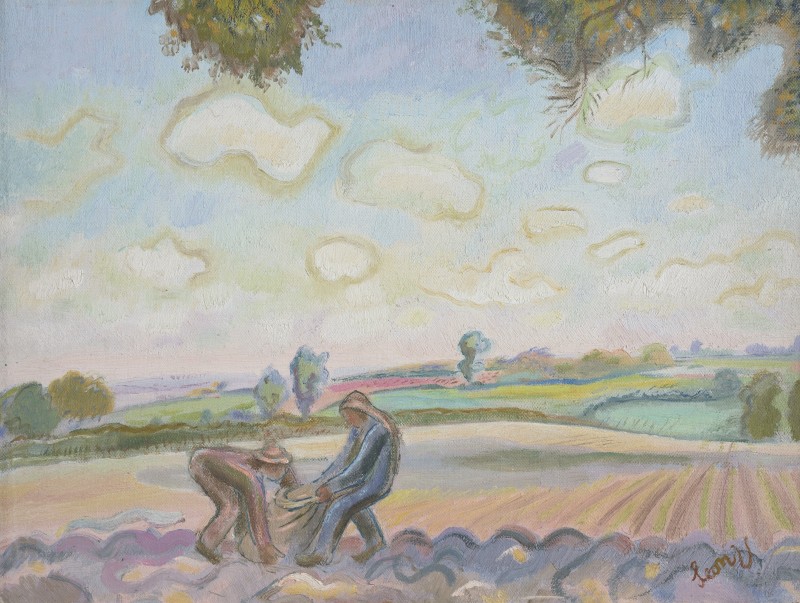 Leon UnderwoodFarm workers, 1935Oil on canvas31 x 41 cmSigned lower right%3Cdiv%20class%3D%22artist%22%3E%3Cspan%20class%3D%22artist%22%3E%3Cstrong%3ELeon%20Underwood%3C/strong%3E%3C/span%3E%3C/div%3E%0D%3Cdiv%20class%3D%22title%22%3E%3Cem%3EFarm%20workers%3C/em%3E%2C%201935%3C/div%3E%0D%3Cdiv%20class%3D%22signed_and_dated%22%3ESigned%20lower%20right%3C/div%3E%0D%3Cdiv%20class%3D%22medium%22%3EOil%20on%20canvas%3C/div%3E%0D%3Cdiv%20class%3D%22dimensions%22%3E31%20x%2041%20cm%3C/div%3E
Leon UnderwoodFarm workers, 1935Oil on canvas31 x 41 cmSigned lower right%3Cdiv%20class%3D%22artist%22%3E%3Cspan%20class%3D%22artist%22%3E%3Cstrong%3ELeon%20Underwood%3C/strong%3E%3C/span%3E%3C/div%3E%0D%3Cdiv%20class%3D%22title%22%3E%3Cem%3EFarm%20workers%3C/em%3E%2C%201935%3C/div%3E%0D%3Cdiv%20class%3D%22signed_and_dated%22%3ESigned%20lower%20right%3C/div%3E%0D%3Cdiv%20class%3D%22medium%22%3EOil%20on%20canvas%3C/div%3E%0D%3Cdiv%20class%3D%22dimensions%22%3E31%20x%2041%20cm%3C/div%3E -
 Leon UnderwoodWomen and Birds, 1934Oil on canvas53.5 x 53.5 cmSigned and dated lower right%3Cdiv%20class%3D%22artist%22%3E%3Cspan%20class%3D%22artist%22%3E%3Cstrong%3ELeon%20Underwood%3C/strong%3E%3C/span%3E%3C/div%3E%0D%3Cdiv%20class%3D%22title%22%3E%3Cem%3EWomen%20and%20Birds%3C/em%3E%2C%201934%3C/div%3E%0D%3Cdiv%20class%3D%22signed_and_dated%22%3ESigned%20and%20dated%20lower%20right%20%3C/div%3E%0D%3Cdiv%20class%3D%22medium%22%3EOil%20on%20canvas%3C/div%3E%0D%3Cdiv%20class%3D%22dimensions%22%3E53.5%20x%2053.5%20cm%3C/div%3E
Leon UnderwoodWomen and Birds, 1934Oil on canvas53.5 x 53.5 cmSigned and dated lower right%3Cdiv%20class%3D%22artist%22%3E%3Cspan%20class%3D%22artist%22%3E%3Cstrong%3ELeon%20Underwood%3C/strong%3E%3C/span%3E%3C/div%3E%0D%3Cdiv%20class%3D%22title%22%3E%3Cem%3EWomen%20and%20Birds%3C/em%3E%2C%201934%3C/div%3E%0D%3Cdiv%20class%3D%22signed_and_dated%22%3ESigned%20and%20dated%20lower%20right%20%3C/div%3E%0D%3Cdiv%20class%3D%22medium%22%3EOil%20on%20canvas%3C/div%3E%0D%3Cdiv%20class%3D%22dimensions%22%3E53.5%20x%2053.5%20cm%3C/div%3E -
 Leon UnderwoodMexican Fruits, 1930Wood-engraving13 x 19 cmSigned and dated%3Cdiv%20class%3D%22artist%22%3E%3Cspan%20class%3D%22artist%22%3E%3Cstrong%3ELeon%20Underwood%3C/strong%3E%3C/span%3E%3C/div%3E%0D%3Cdiv%20class%3D%22title%22%3E%3Cem%3EMexican%20Fruits%3C/em%3E%2C%201930%3C/div%3E%0D%3Cdiv%20class%3D%22signed_and_dated%22%3ESigned%20and%20dated%3C/div%3E%0D%3Cdiv%20class%3D%22medium%22%3EWood-engraving%3C/div%3E%0D%3Cdiv%20class%3D%22dimensions%22%3E13%20x%2019%20cm%3C/div%3E
Leon UnderwoodMexican Fruits, 1930Wood-engraving13 x 19 cmSigned and dated%3Cdiv%20class%3D%22artist%22%3E%3Cspan%20class%3D%22artist%22%3E%3Cstrong%3ELeon%20Underwood%3C/strong%3E%3C/span%3E%3C/div%3E%0D%3Cdiv%20class%3D%22title%22%3E%3Cem%3EMexican%20Fruits%3C/em%3E%2C%201930%3C/div%3E%0D%3Cdiv%20class%3D%22signed_and_dated%22%3ESigned%20and%20dated%3C/div%3E%0D%3Cdiv%20class%3D%22medium%22%3EWood-engraving%3C/div%3E%0D%3Cdiv%20class%3D%22dimensions%22%3E13%20x%2019%20cm%3C/div%3E -
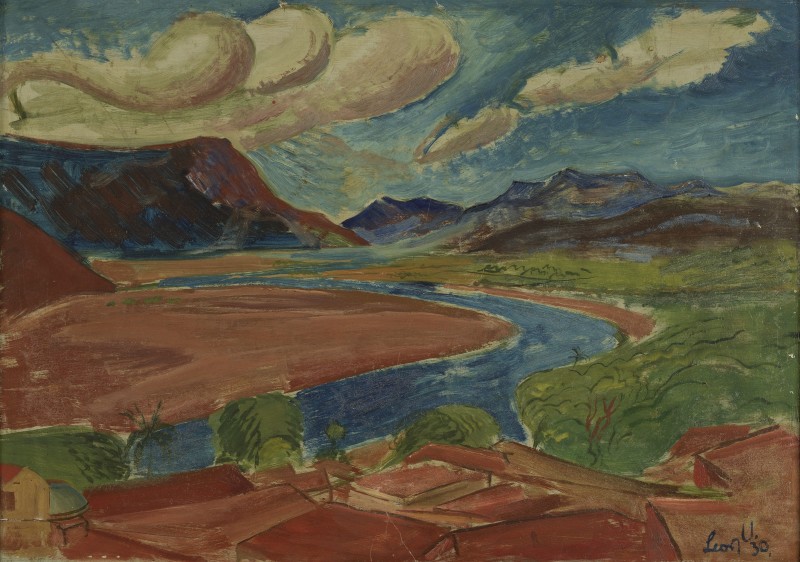 Leon UnderwoodMexican Landscape, 1930Oil on board43 x 60 cmSigned and dated lower right%3Cdiv%20class%3D%22artist%22%3E%3Cspan%20class%3D%22artist%22%3E%3Cstrong%3ELeon%20Underwood%3C/strong%3E%3C/span%3E%3C/div%3E%0D%3Cdiv%20class%3D%22title%22%3E%3Cem%3EMexican%20Landscape%3C/em%3E%2C%201930%3C/div%3E%0D%3Cdiv%20class%3D%22signed_and_dated%22%3ESigned%20and%20dated%20lower%20right%3C/div%3E%0D%3Cdiv%20class%3D%22medium%22%3EOil%20on%20board%3C/div%3E%0D%3Cdiv%20class%3D%22dimensions%22%3E43%20x%2060%20cm%3C/div%3E
Leon UnderwoodMexican Landscape, 1930Oil on board43 x 60 cmSigned and dated lower right%3Cdiv%20class%3D%22artist%22%3E%3Cspan%20class%3D%22artist%22%3E%3Cstrong%3ELeon%20Underwood%3C/strong%3E%3C/span%3E%3C/div%3E%0D%3Cdiv%20class%3D%22title%22%3E%3Cem%3EMexican%20Landscape%3C/em%3E%2C%201930%3C/div%3E%0D%3Cdiv%20class%3D%22signed_and_dated%22%3ESigned%20and%20dated%20lower%20right%3C/div%3E%0D%3Cdiv%20class%3D%22medium%22%3EOil%20on%20board%3C/div%3E%0D%3Cdiv%20class%3D%22dimensions%22%3E43%20x%2060%20cm%3C/div%3E -
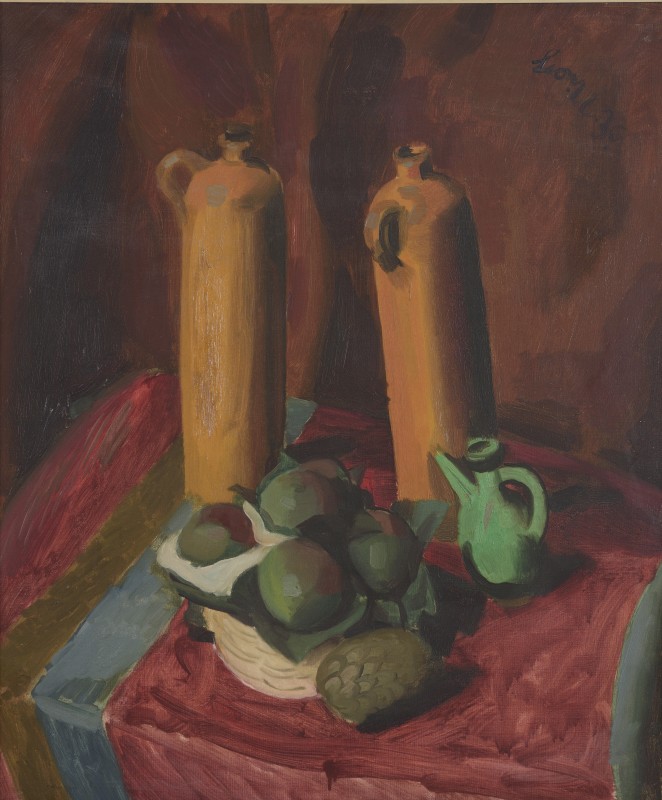 Leon UnderwoodStone Jars, 1930Oil on canvas76 x 64 cmSigned and dated upper right%3Cdiv%20class%3D%22artist%22%3E%3Cspan%20class%3D%22artist%22%3E%3Cstrong%3ELeon%20Underwood%3C/strong%3E%3C/span%3E%3C/div%3E%0D%3Cdiv%20class%3D%22title%22%3E%3Cem%3EStone%20Jars%3C/em%3E%2C%201930%3C/div%3E%0D%3Cdiv%20class%3D%22signed_and_dated%22%3ESigned%20and%20dated%20upper%20right%3C/div%3E%0D%3Cdiv%20class%3D%22medium%22%3EOil%20on%20canvas%3C/div%3E%0D%3Cdiv%20class%3D%22dimensions%22%3E76%20x%2064%20cm%3C/div%3E
Leon UnderwoodStone Jars, 1930Oil on canvas76 x 64 cmSigned and dated upper right%3Cdiv%20class%3D%22artist%22%3E%3Cspan%20class%3D%22artist%22%3E%3Cstrong%3ELeon%20Underwood%3C/strong%3E%3C/span%3E%3C/div%3E%0D%3Cdiv%20class%3D%22title%22%3E%3Cem%3EStone%20Jars%3C/em%3E%2C%201930%3C/div%3E%0D%3Cdiv%20class%3D%22signed_and_dated%22%3ESigned%20and%20dated%20upper%20right%3C/div%3E%0D%3Cdiv%20class%3D%22medium%22%3EOil%20on%20canvas%3C/div%3E%0D%3Cdiv%20class%3D%22dimensions%22%3E76%20x%2064%20cm%3C/div%3E -
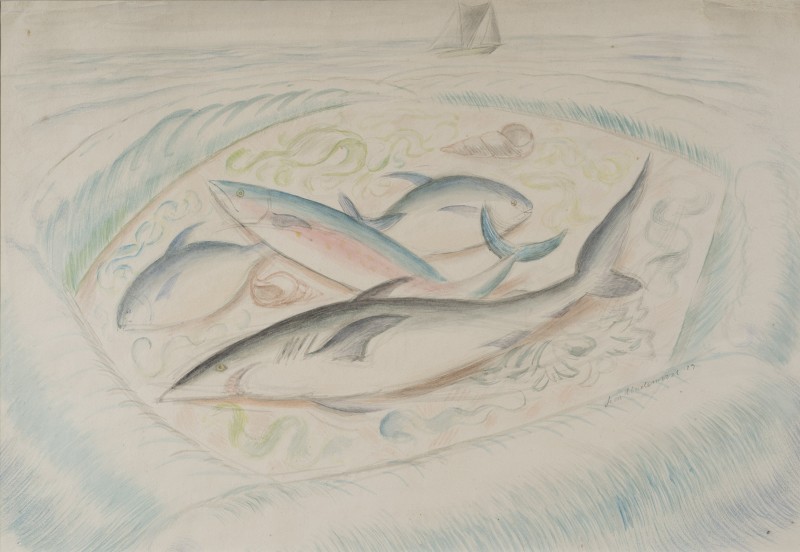 Leon UnderwoodThe Bottom of the Gulf, 1929Watercolour on paper38 x 51 cmSigned and dated lower right centre%3Cdiv%20class%3D%22artist%22%3E%3Cspan%20class%3D%22artist%22%3E%3Cstrong%3ELeon%20Underwood%3C/strong%3E%3C/span%3E%3C/div%3E%0D%3Cdiv%20class%3D%22title%22%3E%3Cem%3EThe%20Bottom%20of%20the%20Gulf%3C/em%3E%2C%201929%3C/div%3E%0D%3Cdiv%20class%3D%22signed_and_dated%22%3ESigned%20and%20dated%20lower%20right%20centre%3C/div%3E%0D%3Cdiv%20class%3D%22medium%22%3EWatercolour%20on%20paper%3C/div%3E%0D%3Cdiv%20class%3D%22dimensions%22%3E38%20x%2051%20cm%3C/div%3E
Leon UnderwoodThe Bottom of the Gulf, 1929Watercolour on paper38 x 51 cmSigned and dated lower right centre%3Cdiv%20class%3D%22artist%22%3E%3Cspan%20class%3D%22artist%22%3E%3Cstrong%3ELeon%20Underwood%3C/strong%3E%3C/span%3E%3C/div%3E%0D%3Cdiv%20class%3D%22title%22%3E%3Cem%3EThe%20Bottom%20of%20the%20Gulf%3C/em%3E%2C%201929%3C/div%3E%0D%3Cdiv%20class%3D%22signed_and_dated%22%3ESigned%20and%20dated%20lower%20right%20centre%3C/div%3E%0D%3Cdiv%20class%3D%22medium%22%3EWatercolour%20on%20paper%3C/div%3E%0D%3Cdiv%20class%3D%22dimensions%22%3E38%20x%2051%20cm%3C/div%3E -
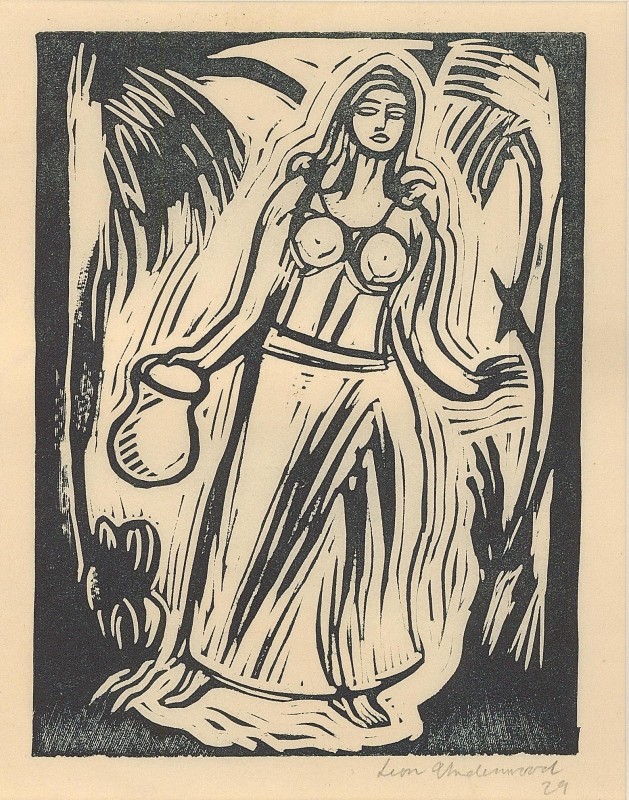 Leon UnderwoodWater Carrier, 1929Woodcut15 x 11 cm (image)From the edition of 50 impressionsSigned, dated, titled and numbered%3Cdiv%20class%3D%22artist%22%3E%3Cspan%20class%3D%22artist%22%3E%3Cstrong%3ELeon%20Underwood%3C/strong%3E%3C/span%3E%3C/div%3E%0D%3Cdiv%20class%3D%22title%22%3E%3Cem%3EWater%20Carrier%3C/em%3E%2C%201929%3C/div%3E%0D%3Cdiv%20class%3D%22signed_and_dated%22%3ESigned%2C%20dated%2C%20titled%20and%20numbered%3C/div%3E%0D%3Cdiv%20class%3D%22medium%22%3EWoodcut%3C/div%3E%0D%3Cdiv%20class%3D%22dimensions%22%3E15%20x%2011%20cm%20%28image%29%3C/div%3E%0D%3Cdiv%20class%3D%22edition_details%22%3EFrom%20the%20edition%20of%2050%20impressions%3C/div%3E
Leon UnderwoodWater Carrier, 1929Woodcut15 x 11 cm (image)From the edition of 50 impressionsSigned, dated, titled and numbered%3Cdiv%20class%3D%22artist%22%3E%3Cspan%20class%3D%22artist%22%3E%3Cstrong%3ELeon%20Underwood%3C/strong%3E%3C/span%3E%3C/div%3E%0D%3Cdiv%20class%3D%22title%22%3E%3Cem%3EWater%20Carrier%3C/em%3E%2C%201929%3C/div%3E%0D%3Cdiv%20class%3D%22signed_and_dated%22%3ESigned%2C%20dated%2C%20titled%20and%20numbered%3C/div%3E%0D%3Cdiv%20class%3D%22medium%22%3EWoodcut%3C/div%3E%0D%3Cdiv%20class%3D%22dimensions%22%3E15%20x%2011%20cm%20%28image%29%3C/div%3E%0D%3Cdiv%20class%3D%22edition_details%22%3EFrom%20the%20edition%20of%2050%20impressions%3C/div%3E -
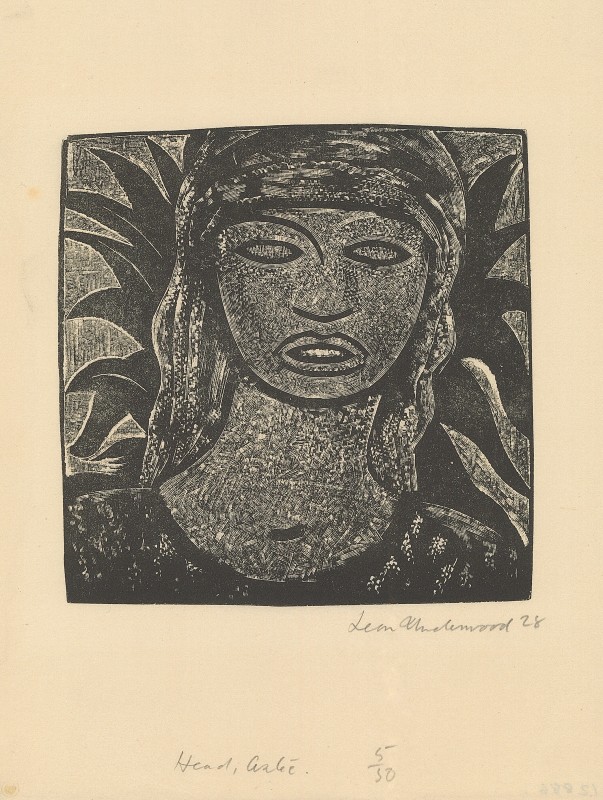 Leon UnderwoodAztec Head, 1928Woodcut15 x 14 cm (image)From the edition of 50 impressionsSigned, dated, titled and numbered%3Cdiv%20class%3D%22artist%22%3E%3Cspan%20class%3D%22artist%22%3E%3Cstrong%3ELeon%20Underwood%3C/strong%3E%3C/span%3E%3C/div%3E%0D%3Cdiv%20class%3D%22title%22%3E%3Cem%3EAztec%20Head%3C/em%3E%2C%201928%3C/div%3E%0D%3Cdiv%20class%3D%22signed_and_dated%22%3ESigned%2C%20dated%2C%20titled%20and%20numbered%3C/div%3E%0D%3Cdiv%20class%3D%22medium%22%3EWoodcut%3C/div%3E%0D%3Cdiv%20class%3D%22dimensions%22%3E15%20x%2014%20cm%20%28image%29%3C/div%3E%0D%3Cdiv%20class%3D%22edition_details%22%3EFrom%20the%20edition%20of%2050%20impressions%3C/div%3E
Leon UnderwoodAztec Head, 1928Woodcut15 x 14 cm (image)From the edition of 50 impressionsSigned, dated, titled and numbered%3Cdiv%20class%3D%22artist%22%3E%3Cspan%20class%3D%22artist%22%3E%3Cstrong%3ELeon%20Underwood%3C/strong%3E%3C/span%3E%3C/div%3E%0D%3Cdiv%20class%3D%22title%22%3E%3Cem%3EAztec%20Head%3C/em%3E%2C%201928%3C/div%3E%0D%3Cdiv%20class%3D%22signed_and_dated%22%3ESigned%2C%20dated%2C%20titled%20and%20numbered%3C/div%3E%0D%3Cdiv%20class%3D%22medium%22%3EWoodcut%3C/div%3E%0D%3Cdiv%20class%3D%22dimensions%22%3E15%20x%2014%20cm%20%28image%29%3C/div%3E%0D%3Cdiv%20class%3D%22edition_details%22%3EFrom%20the%20edition%20of%2050%20impressions%3C/div%3E -
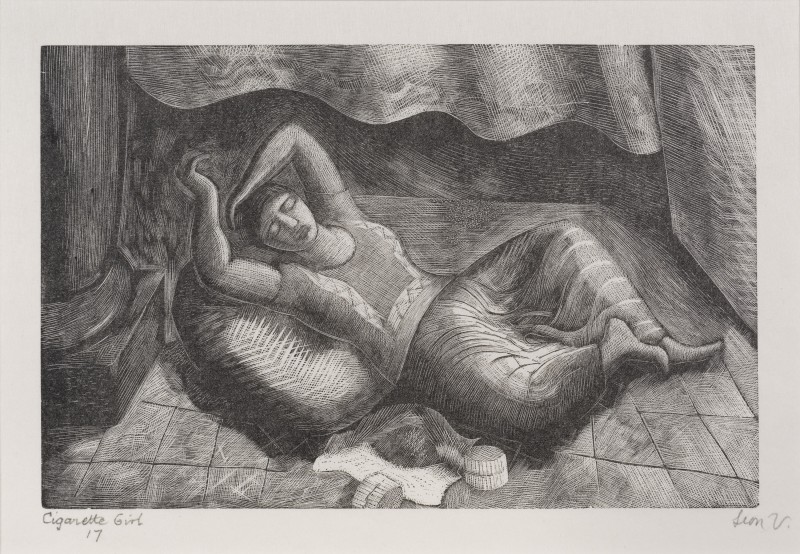 Leon UnderwoodCigarette Girl, Tehuantepec , 1928Wood-engraving13 x 20 cm (image)From the edition of 50 impressionsSigned, titled and numbered%3Cdiv%20class%3D%22artist%22%3E%3Cspan%20class%3D%22artist%22%3E%3Cstrong%3ELeon%20Underwood%3C/strong%3E%3C/span%3E%3C/div%3E%0D%3Cdiv%20class%3D%22title%22%3E%3Cem%3ECigarette%20Girl%2C%20Tehuantepec%20%3C/em%3E%2C%201928%3C/div%3E%0D%3Cdiv%20class%3D%22signed_and_dated%22%3ESigned%2C%20titled%20and%20numbered%3C/div%3E%0D%3Cdiv%20class%3D%22medium%22%3EWood-engraving%3C/div%3E%0D%3Cdiv%20class%3D%22dimensions%22%3E13%20x%2020%20cm%20%28image%29%3C/div%3E%0D%3Cdiv%20class%3D%22edition_details%22%3EFrom%20the%20edition%20of%2050%20impressions%3C/div%3E
Leon UnderwoodCigarette Girl, Tehuantepec , 1928Wood-engraving13 x 20 cm (image)From the edition of 50 impressionsSigned, titled and numbered%3Cdiv%20class%3D%22artist%22%3E%3Cspan%20class%3D%22artist%22%3E%3Cstrong%3ELeon%20Underwood%3C/strong%3E%3C/span%3E%3C/div%3E%0D%3Cdiv%20class%3D%22title%22%3E%3Cem%3ECigarette%20Girl%2C%20Tehuantepec%20%3C/em%3E%2C%201928%3C/div%3E%0D%3Cdiv%20class%3D%22signed_and_dated%22%3ESigned%2C%20titled%20and%20numbered%3C/div%3E%0D%3Cdiv%20class%3D%22medium%22%3EWood-engraving%3C/div%3E%0D%3Cdiv%20class%3D%22dimensions%22%3E13%20x%2020%20cm%20%28image%29%3C/div%3E%0D%3Cdiv%20class%3D%22edition_details%22%3EFrom%20the%20edition%20of%2050%20impressions%3C/div%3E -
 Leon UnderwoodLorain dancing, 1925 (c.)Crayon on paper35 x 21 cmSigned lower right%3Cdiv%20class%3D%22artist%22%3E%3Cspan%20class%3D%22artist%22%3E%3Cstrong%3ELeon%20Underwood%3C/strong%3E%3C/span%3E%3C/div%3E%0D%3Cdiv%20class%3D%22title%22%3E%3Cem%3ELorain%20dancing%3C/em%3E%2C%201925%20%28c.%29%3C/div%3E%0D%3Cdiv%20class%3D%22signed_and_dated%22%3ESigned%20lower%20right%3C/div%3E%0D%3Cdiv%20class%3D%22medium%22%3ECrayon%20on%20paper%3C/div%3E%0D%3Cdiv%20class%3D%22dimensions%22%3E35%20x%2021%20cm%3C/div%3E
Leon UnderwoodLorain dancing, 1925 (c.)Crayon on paper35 x 21 cmSigned lower right%3Cdiv%20class%3D%22artist%22%3E%3Cspan%20class%3D%22artist%22%3E%3Cstrong%3ELeon%20Underwood%3C/strong%3E%3C/span%3E%3C/div%3E%0D%3Cdiv%20class%3D%22title%22%3E%3Cem%3ELorain%20dancing%3C/em%3E%2C%201925%20%28c.%29%3C/div%3E%0D%3Cdiv%20class%3D%22signed_and_dated%22%3ESigned%20lower%20right%3C/div%3E%0D%3Cdiv%20class%3D%22medium%22%3ECrayon%20on%20paper%3C/div%3E%0D%3Cdiv%20class%3D%22dimensions%22%3E35%20x%2021%20cm%3C/div%3E -
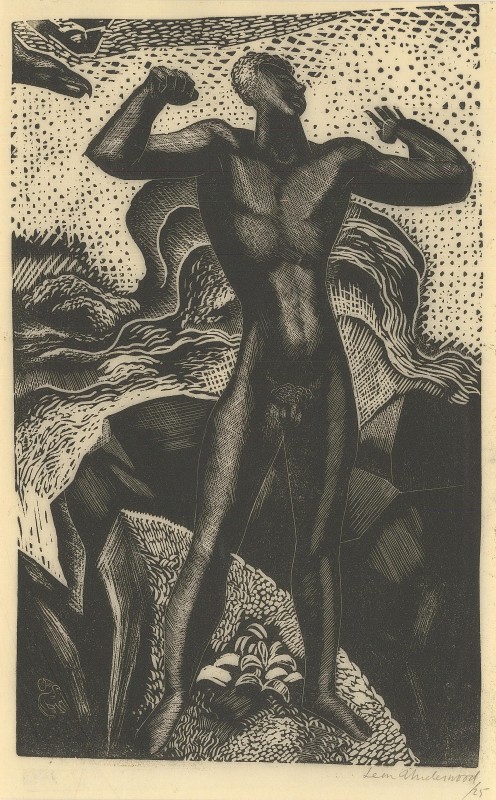 Leon UnderwoodHuman Proclivities: Freedom, 1925Woodcut28 x 17 cm (image)From the edition of 12 impressionsSigned and dated%3Cdiv%20class%3D%22artist%22%3E%3Cspan%20class%3D%22artist%22%3E%3Cstrong%3ELeon%20Underwood%3C/strong%3E%3C/span%3E%3C/div%3E%0D%3Cdiv%20class%3D%22title%22%3E%3Cem%3EHuman%20Proclivities%3A%20Freedom%3C/em%3E%2C%201925%3C/div%3E%0D%3Cdiv%20class%3D%22signed_and_dated%22%3ESigned%20and%20dated%3C/div%3E%0D%3Cdiv%20class%3D%22medium%22%3EWoodcut%20%3C/div%3E%0D%3Cdiv%20class%3D%22dimensions%22%3E28%20x%2017%20cm%20%28image%29%3C/div%3E%0D%3Cdiv%20class%3D%22edition_details%22%3EFrom%20the%20edition%20of%2012%20impressions%3C/div%3E
Leon UnderwoodHuman Proclivities: Freedom, 1925Woodcut28 x 17 cm (image)From the edition of 12 impressionsSigned and dated%3Cdiv%20class%3D%22artist%22%3E%3Cspan%20class%3D%22artist%22%3E%3Cstrong%3ELeon%20Underwood%3C/strong%3E%3C/span%3E%3C/div%3E%0D%3Cdiv%20class%3D%22title%22%3E%3Cem%3EHuman%20Proclivities%3A%20Freedom%3C/em%3E%2C%201925%3C/div%3E%0D%3Cdiv%20class%3D%22signed_and_dated%22%3ESigned%20and%20dated%3C/div%3E%0D%3Cdiv%20class%3D%22medium%22%3EWoodcut%20%3C/div%3E%0D%3Cdiv%20class%3D%22dimensions%22%3E28%20x%2017%20cm%20%28image%29%3C/div%3E%0D%3Cdiv%20class%3D%22edition_details%22%3EFrom%20the%20edition%20of%2012%20impressions%3C/div%3E -
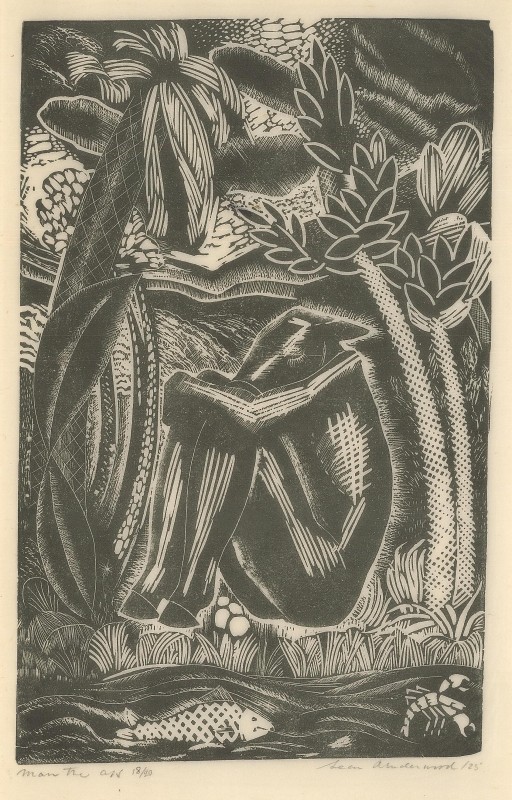 Leon UnderwoodHuman Proclivities: Jungle of the Mind, 1925Woodcut27 x 17 cm (image)From the edition of 20 impressionsSigned, titled, dated and numbered%3Cdiv%20class%3D%22artist%22%3E%3Cspan%20class%3D%22artist%22%3E%3Cstrong%3ELeon%20Underwood%3C/strong%3E%3C/span%3E%3C/div%3E%0D%3Cdiv%20class%3D%22title%22%3E%3Cem%3EHuman%20Proclivities%3A%20Jungle%20of%20the%20Mind%3C/em%3E%2C%201925%3C/div%3E%0D%3Cdiv%20class%3D%22signed_and_dated%22%3ESigned%2C%20titled%2C%20dated%20and%20numbered%3C/div%3E%0D%3Cdiv%20class%3D%22medium%22%3EWoodcut%3C/div%3E%0D%3Cdiv%20class%3D%22dimensions%22%3E27%20x%2017%20cm%20%28image%29%3C/div%3E%0D%3Cdiv%20class%3D%22edition_details%22%3EFrom%20the%20edition%20of%2020%20impressions%3C/div%3E
Leon UnderwoodHuman Proclivities: Jungle of the Mind, 1925Woodcut27 x 17 cm (image)From the edition of 20 impressionsSigned, titled, dated and numbered%3Cdiv%20class%3D%22artist%22%3E%3Cspan%20class%3D%22artist%22%3E%3Cstrong%3ELeon%20Underwood%3C/strong%3E%3C/span%3E%3C/div%3E%0D%3Cdiv%20class%3D%22title%22%3E%3Cem%3EHuman%20Proclivities%3A%20Jungle%20of%20the%20Mind%3C/em%3E%2C%201925%3C/div%3E%0D%3Cdiv%20class%3D%22signed_and_dated%22%3ESigned%2C%20titled%2C%20dated%20and%20numbered%3C/div%3E%0D%3Cdiv%20class%3D%22medium%22%3EWoodcut%3C/div%3E%0D%3Cdiv%20class%3D%22dimensions%22%3E27%20x%2017%20cm%20%28image%29%3C/div%3E%0D%3Cdiv%20class%3D%22edition_details%22%3EFrom%20the%20edition%20of%2020%20impressions%3C/div%3E -
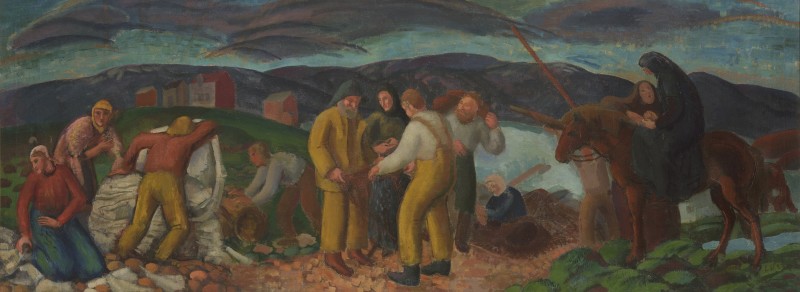 Leon UnderwoodIceland's All, 1923Oil on canvas67 x 177 cmSigned with initials and dated lower right%3Cdiv%20class%3D%22artist%22%3E%3Cspan%20class%3D%22artist%22%3E%3Cstrong%3ELeon%20Underwood%3C/strong%3E%3C/span%3E%3C/div%3E%0D%3Cdiv%20class%3D%22title%22%3E%3Cem%3EIceland%27s%20All%3C/em%3E%2C%201923%3C/div%3E%0D%3Cdiv%20class%3D%22signed_and_dated%22%3ESigned%20with%20initials%20and%20dated%20lower%20right%3C/div%3E%0D%3Cdiv%20class%3D%22medium%22%3EOil%20on%20canvas%3C/div%3E%0D%3Cdiv%20class%3D%22dimensions%22%3E67%20x%20177%20cm%3C/div%3E
Leon UnderwoodIceland's All, 1923Oil on canvas67 x 177 cmSigned with initials and dated lower right%3Cdiv%20class%3D%22artist%22%3E%3Cspan%20class%3D%22artist%22%3E%3Cstrong%3ELeon%20Underwood%3C/strong%3E%3C/span%3E%3C/div%3E%0D%3Cdiv%20class%3D%22title%22%3E%3Cem%3EIceland%27s%20All%3C/em%3E%2C%201923%3C/div%3E%0D%3Cdiv%20class%3D%22signed_and_dated%22%3ESigned%20with%20initials%20and%20dated%20lower%20right%3C/div%3E%0D%3Cdiv%20class%3D%22medium%22%3EOil%20on%20canvas%3C/div%3E%0D%3Cdiv%20class%3D%22dimensions%22%3E67%20x%20177%20cm%3C/div%3E -
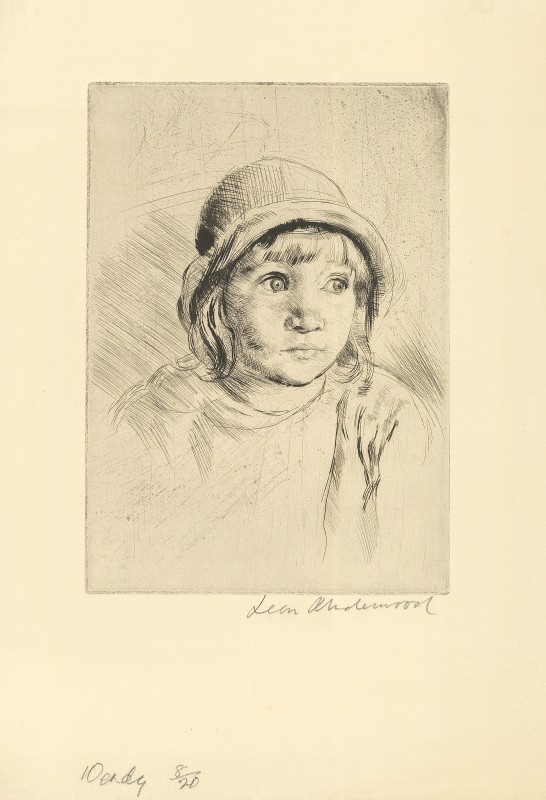 Leon UnderwoodWendy, 1922Etching17 x 12 cm (image)From the edition of 20 impressionsSigned, titled and numbered%3Cdiv%20class%3D%22artist%22%3E%3Cspan%20class%3D%22artist%22%3E%3Cstrong%3ELeon%20Underwood%3C/strong%3E%3C/span%3E%3C/div%3E%0D%3Cdiv%20class%3D%22title%22%3E%3Cem%3EWendy%3C/em%3E%2C%201922%3C/div%3E%0D%3Cdiv%20class%3D%22signed_and_dated%22%3ESigned%2C%20titled%20and%20numbered%3C/div%3E%0D%3Cdiv%20class%3D%22medium%22%3EEtching%3C/div%3E%0D%3Cdiv%20class%3D%22dimensions%22%3E17%20x%2012%20cm%20%28image%29%3C/div%3E%0D%3Cdiv%20class%3D%22edition_details%22%3EFrom%20the%20edition%20of%2020%20impressions%3C/div%3E
Leon UnderwoodWendy, 1922Etching17 x 12 cm (image)From the edition of 20 impressionsSigned, titled and numbered%3Cdiv%20class%3D%22artist%22%3E%3Cspan%20class%3D%22artist%22%3E%3Cstrong%3ELeon%20Underwood%3C/strong%3E%3C/span%3E%3C/div%3E%0D%3Cdiv%20class%3D%22title%22%3E%3Cem%3EWendy%3C/em%3E%2C%201922%3C/div%3E%0D%3Cdiv%20class%3D%22signed_and_dated%22%3ESigned%2C%20titled%20and%20numbered%3C/div%3E%0D%3Cdiv%20class%3D%22medium%22%3EEtching%3C/div%3E%0D%3Cdiv%20class%3D%22dimensions%22%3E17%20x%2012%20cm%20%28image%29%3C/div%3E%0D%3Cdiv%20class%3D%22edition_details%22%3EFrom%20the%20edition%20of%2020%20impressions%3C/div%3E -
 Leon UnderwoodThe Student (Eileen Agar), 1921Etching16 x 10 cm (image)From the edition of 11 impressionsSigned, dated, titled and numbered%3Cdiv%20class%3D%22artist%22%3E%3Cspan%20class%3D%22artist%22%3E%3Cstrong%3ELeon%20Underwood%3C/strong%3E%3C/span%3E%3C/div%3E%0D%3Cdiv%20class%3D%22title%22%3E%3Cem%3EThe%20Student%20%28Eileen%20Agar%29%3C/em%3E%2C%201921%3C/div%3E%0D%3Cdiv%20class%3D%22signed_and_dated%22%3ESigned%2C%20dated%2C%20titled%20and%20numbered%3C/div%3E%0D%3Cdiv%20class%3D%22medium%22%3EEtching%3C/div%3E%0D%3Cdiv%20class%3D%22dimensions%22%3E16%20x%2010%20cm%20%28image%29%3C/div%3E%0D%3Cdiv%20class%3D%22edition_details%22%3EFrom%20the%20edition%20of%2011%20impressions%3C/div%3E
Leon UnderwoodThe Student (Eileen Agar), 1921Etching16 x 10 cm (image)From the edition of 11 impressionsSigned, dated, titled and numbered%3Cdiv%20class%3D%22artist%22%3E%3Cspan%20class%3D%22artist%22%3E%3Cstrong%3ELeon%20Underwood%3C/strong%3E%3C/span%3E%3C/div%3E%0D%3Cdiv%20class%3D%22title%22%3E%3Cem%3EThe%20Student%20%28Eileen%20Agar%29%3C/em%3E%2C%201921%3C/div%3E%0D%3Cdiv%20class%3D%22signed_and_dated%22%3ESigned%2C%20dated%2C%20titled%20and%20numbered%3C/div%3E%0D%3Cdiv%20class%3D%22medium%22%3EEtching%3C/div%3E%0D%3Cdiv%20class%3D%22dimensions%22%3E16%20x%2010%20cm%20%28image%29%3C/div%3E%0D%3Cdiv%20class%3D%22edition_details%22%3EFrom%20the%20edition%20of%2011%20impressions%3C/div%3E -
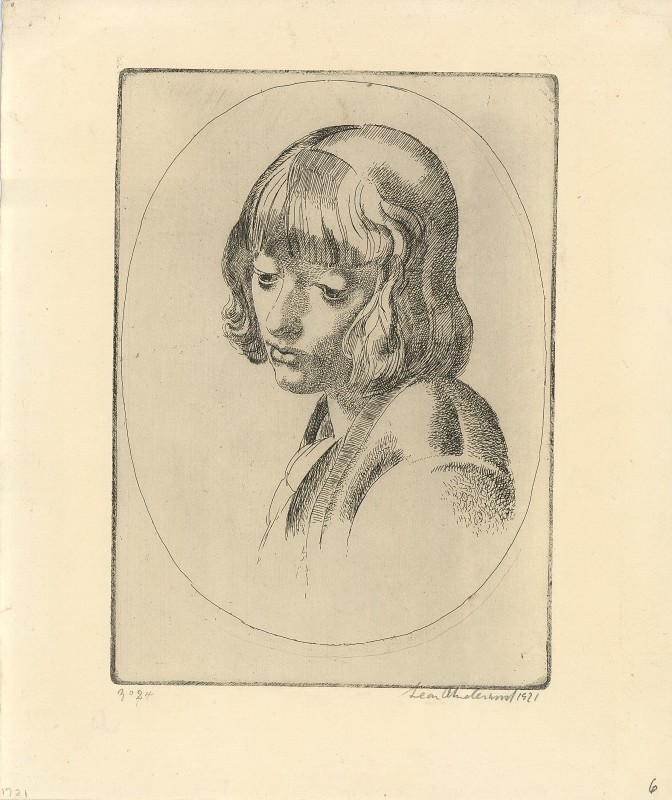 Leon UnderwoodThe Tulip Girl, 1921Etching17 x 12 cm (image)A working proof, before the addition of the bunch of tulips and some background detailSigned and dated%3Cdiv%20class%3D%22artist%22%3E%3Cspan%20class%3D%22artist%22%3E%3Cstrong%3ELeon%20Underwood%3C/strong%3E%3C/span%3E%3C/div%3E%0D%3Cdiv%20class%3D%22title%22%3E%3Cem%3EThe%20Tulip%20Girl%3C/em%3E%2C%201921%3C/div%3E%0D%3Cdiv%20class%3D%22signed_and_dated%22%3ESigned%20and%20dated%3C/div%3E%0D%3Cdiv%20class%3D%22medium%22%3EEtching%3C/div%3E%0D%3Cdiv%20class%3D%22dimensions%22%3E17%20x%2012%20cm%20%28image%29%3C/div%3E%0D%3Cdiv%20class%3D%22edition_details%22%3EA%20working%20proof%2C%20before%20the%20addition%20of%20the%20bunch%20of%20tulips%20and%20some%20background%20detail%3C/div%3E
Leon UnderwoodThe Tulip Girl, 1921Etching17 x 12 cm (image)A working proof, before the addition of the bunch of tulips and some background detailSigned and dated%3Cdiv%20class%3D%22artist%22%3E%3Cspan%20class%3D%22artist%22%3E%3Cstrong%3ELeon%20Underwood%3C/strong%3E%3C/span%3E%3C/div%3E%0D%3Cdiv%20class%3D%22title%22%3E%3Cem%3EThe%20Tulip%20Girl%3C/em%3E%2C%201921%3C/div%3E%0D%3Cdiv%20class%3D%22signed_and_dated%22%3ESigned%20and%20dated%3C/div%3E%0D%3Cdiv%20class%3D%22medium%22%3EEtching%3C/div%3E%0D%3Cdiv%20class%3D%22dimensions%22%3E17%20x%2012%20cm%20%28image%29%3C/div%3E%0D%3Cdiv%20class%3D%22edition_details%22%3EA%20working%20proof%2C%20before%20the%20addition%20of%20the%20bunch%20of%20tulips%20and%20some%20background%20detail%3C/div%3E -
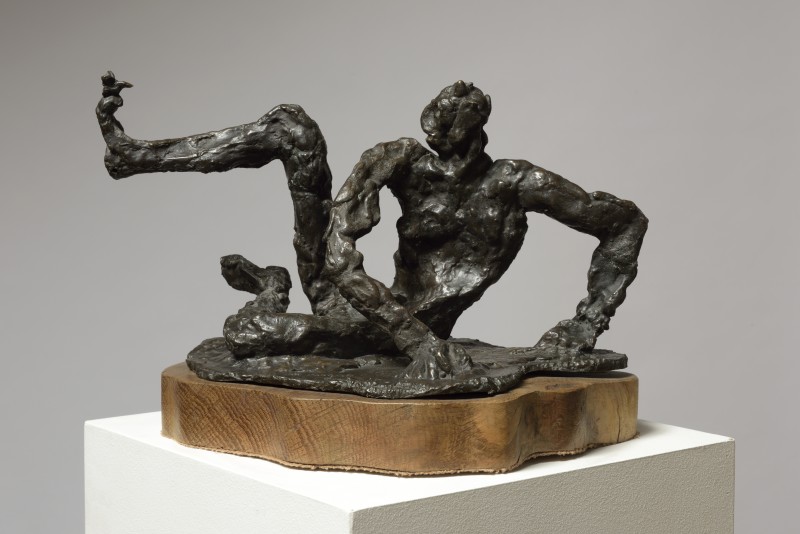 Leon UnderwoodParasite, 1959Bronze23 x 38 x 30 cmFrom the edition of 7Signed, dated, titled and numbered%3Cdiv%20class%3D%22artist%22%3E%3Cspan%20class%3D%22artist%22%3E%3Cstrong%3ELeon%20Underwood%3C/strong%3E%3C/span%3E%3C/div%3E%0D%3Cdiv%20class%3D%22title%22%3E%3Cem%3EParasite%3C/em%3E%2C%201959%3C/div%3E%0D%3Cdiv%20class%3D%22signed_and_dated%22%3ESigned%2C%20dated%2C%20titled%20and%20numbered%20%3C/div%3E%0D%3Cdiv%20class%3D%22medium%22%3EBronze%3C/div%3E%0D%3Cdiv%20class%3D%22dimensions%22%3E23%20x%2038%20x%2030%20cm%3C/div%3E%0D%3Cdiv%20class%3D%22edition_details%22%3EFrom%20the%20edition%20of%207%3C/div%3E
Leon UnderwoodParasite, 1959Bronze23 x 38 x 30 cmFrom the edition of 7Signed, dated, titled and numbered%3Cdiv%20class%3D%22artist%22%3E%3Cspan%20class%3D%22artist%22%3E%3Cstrong%3ELeon%20Underwood%3C/strong%3E%3C/span%3E%3C/div%3E%0D%3Cdiv%20class%3D%22title%22%3E%3Cem%3EParasite%3C/em%3E%2C%201959%3C/div%3E%0D%3Cdiv%20class%3D%22signed_and_dated%22%3ESigned%2C%20dated%2C%20titled%20and%20numbered%20%3C/div%3E%0D%3Cdiv%20class%3D%22medium%22%3EBronze%3C/div%3E%0D%3Cdiv%20class%3D%22dimensions%22%3E23%20x%2038%20x%2030%20cm%3C/div%3E%0D%3Cdiv%20class%3D%22edition_details%22%3EFrom%20the%20edition%20of%207%3C/div%3E -
 Leon UnderwoodLaocöon, 1951Oil on canvas49 x 59 cmSigned and dated%3Cdiv%20class%3D%22artist%22%3E%3Cspan%20class%3D%22artist%22%3E%3Cstrong%3ELeon%20Underwood%3C%2Fstrong%3E%3C%2Fspan%3E%3C%2Fdiv%3E%0D%3Cdiv%20class%3D%22title%22%3E%3Cem%3ELaoc%C3%B6on%3C%2Fem%3E%2C%201951%3C%2Fdiv%3E%0D%3Cdiv%20class%3D%22signed_and_dated%22%3ESigned%20and%20dated%3C%2Fdiv%3E%0D%3Cdiv%20class%3D%22medium%22%3EOil%20on%20canvas%3C%2Fdiv%3E%0D%3Cdiv%20class%3D%22dimensions%22%3E49%20x%2059%20cm%3C%2Fdiv%3E
Leon UnderwoodLaocöon, 1951Oil on canvas49 x 59 cmSigned and dated%3Cdiv%20class%3D%22artist%22%3E%3Cspan%20class%3D%22artist%22%3E%3Cstrong%3ELeon%20Underwood%3C%2Fstrong%3E%3C%2Fspan%3E%3C%2Fdiv%3E%0D%3Cdiv%20class%3D%22title%22%3E%3Cem%3ELaoc%C3%B6on%3C%2Fem%3E%2C%201951%3C%2Fdiv%3E%0D%3Cdiv%20class%3D%22signed_and_dated%22%3ESigned%20and%20dated%3C%2Fdiv%3E%0D%3Cdiv%20class%3D%22medium%22%3EOil%20on%20canvas%3C%2Fdiv%3E%0D%3Cdiv%20class%3D%22dimensions%22%3E49%20x%2059%20cm%3C%2Fdiv%3E -
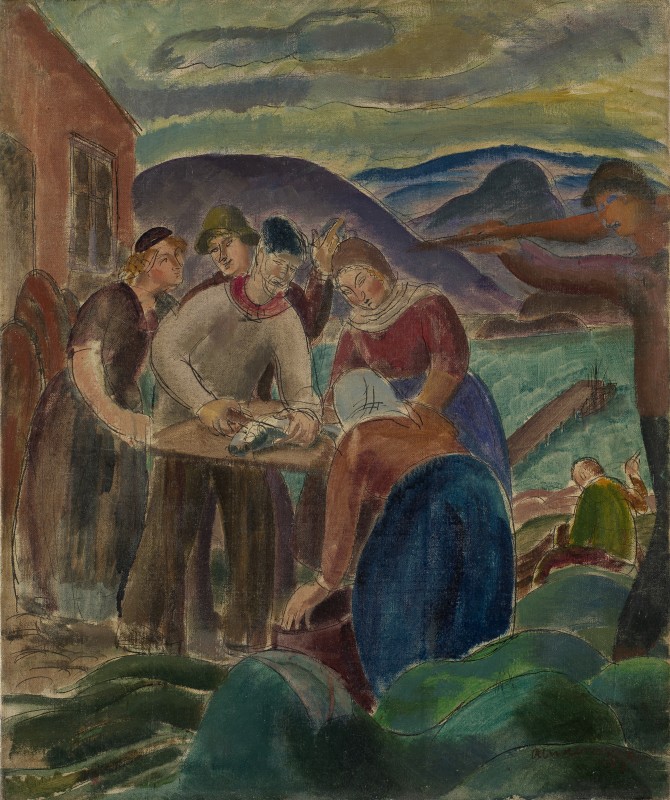 Leon UnderwoodIcelandic Fishermen and Women, 1923Oil on canvas61 x 51 cmSigned and dated lower right%3Cdiv%20class%3D%22artist%22%3E%3Cspan%20class%3D%22artist%22%3E%3Cstrong%3ELeon%20Underwood%3C/strong%3E%3C/span%3E%3C/div%3E%0D%3Cdiv%20class%3D%22title%22%3E%3Cem%3EIcelandic%20Fishermen%20and%20Women%3C/em%3E%2C%201923%3C/div%3E%0D%3Cdiv%20class%3D%22signed_and_dated%22%3ESigned%20and%20dated%20lower%20right%3C/div%3E%0D%3Cdiv%20class%3D%22medium%22%3EOil%20on%20canvas%3C/div%3E%0D%3Cdiv%20class%3D%22dimensions%22%3E61%20x%2051%20cm%3C/div%3E
Leon UnderwoodIcelandic Fishermen and Women, 1923Oil on canvas61 x 51 cmSigned and dated lower right%3Cdiv%20class%3D%22artist%22%3E%3Cspan%20class%3D%22artist%22%3E%3Cstrong%3ELeon%20Underwood%3C/strong%3E%3C/span%3E%3C/div%3E%0D%3Cdiv%20class%3D%22title%22%3E%3Cem%3EIcelandic%20Fishermen%20and%20Women%3C/em%3E%2C%201923%3C/div%3E%0D%3Cdiv%20class%3D%22signed_and_dated%22%3ESigned%20and%20dated%20lower%20right%3C/div%3E%0D%3Cdiv%20class%3D%22medium%22%3EOil%20on%20canvas%3C/div%3E%0D%3Cdiv%20class%3D%22dimensions%22%3E61%20x%2051%20cm%3C/div%3E
